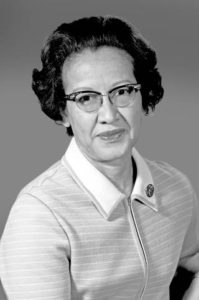

In 1979 she took a demotion to serve as an administrator in the Equal Opportunity Specialist field where she worked to elevate women in science, engineering, and mathematics at NASA. Over the next 20 years, Jackson reached the highest senior-level title within the engineering department.īut Jackson didn’t stop there, she decided to reach back and help others up. In 1958, she was promoted to aerospace engineer and became NASA’s first black female engineer. Jackson began taking graduate-level physics and mathematics classes at night in order to become an engineer. She started as a research mathematician, or computer, in the segregated West Area Computing Section.

The National Aeronautics and Space Administration (NASA) recruited Jackson in 1951. She began tutoring high school and college students in mathematics, a passion she committed herself too for the rest of her life. After graduation, Mary Jackson taught math in public schools in Maryland, which was still segregated at the time. She earned bachelor’s degrees in mathematics and physical science from Hampton University in 1942. Jackson grew up in Hampton, Virginia where she graduated from high school with the highest honors. Her Story: Mary Jackson (1921-2005) NASA’s first black female engineer. She married Lieutenant Colonel James Johnson in 1959.In honor of National Pi Day, we are paying tribute to Katherine Johnson, Dorothy Vaughan, and Mary Jackson, three African-American female mathematicians who worked for NASA and contributed to American winning the great space race. Johnson and her first husband, James Goble, who died in 1956, had three daughters. Johnson made the transition to the computer era and worked on the shuttle programme while writing or co-writing 26 research reports before retiring in 1986, NASA said. She would go on to calculate crucial rocket trajectories, orbital paths and launch windows.

Johnson found herself in a realm made up almost exclusively of white men when she was chosen to be part of the team supporting the 1961 mission that made Alan Shepard the first American in space. After teaching for seven years, Johnson went to work for the National Advisory Committee for Aeronautics, a forerunner of NASA, in 1953. She zipped through the school’s math program, earning degrees in math and French before becoming one of the first black students in the graduate school at West Virginia University in 1938. Johnson’s math skills got her into West Virginia State College at age 15. But her mother, a former teacher, and her father, a farmer and handyman, stressed education and moved the family 120 miles to a town that had a high school for black children. Johnson grew up in West Virginia at a time when educational opportunities for black people were limited because of segregation. She wished it away, willed it out of existence inasmuch as her daily life was concerned.”

“She knew just as well as any other black person the tax levied upon them because of their color. “She didn’t close her eyes to the racism that existed,” Margot Lee Shetterly wrote in Hidden Figures. “He knew I had done before for him and they trusted my work,” Johnson told the Washington Post in 2017.ĭuring the space race between the US and the former Soviet Union, Johnson and her co-workers ran the numbers for unmanned rocket launches, test flights and aeroplane safety studies using pencils, slide rules and mechanical calculating machines.īut they did their work in facilities separate from white workers and were required to use separate restrooms and dining facilities. Johnson worked on the Mercury and Apollo missions, including the first moon landing in 1969, and the early years of the space shuttle programme. Astronaut John Glenn thought so much of her that he insisted Johnson be consulted before his historic earth-orbiting flight in 1962. “Get the girl to check the numbers,” he said. “She’s one of the greatest minds ever to grace our agency or our country,” then NASA Administrator Charles Bolden said when Johnson was presented with the honour. Johnson was also awarded a Presidential Medal of Freedom by former United States President Barack Obama in 2015. Johnson’s 33-year career with NASA was portrayed in the book Hidden Figures, which then went on to become an Oscar-nominated film. “She was an American hero and her pioneering legacy will never be forgotten,” NASA Administrator Jim Bridenstine wrote on Twitter. Katherine Johnson, the black woman whose mathematical genius took her from a behind-the-scenes job in a segregated NASA to a key role in sending humans to the moon, died on Monday at the age of 101, the space agency said.


 0 kommentar(er)
0 kommentar(er)
